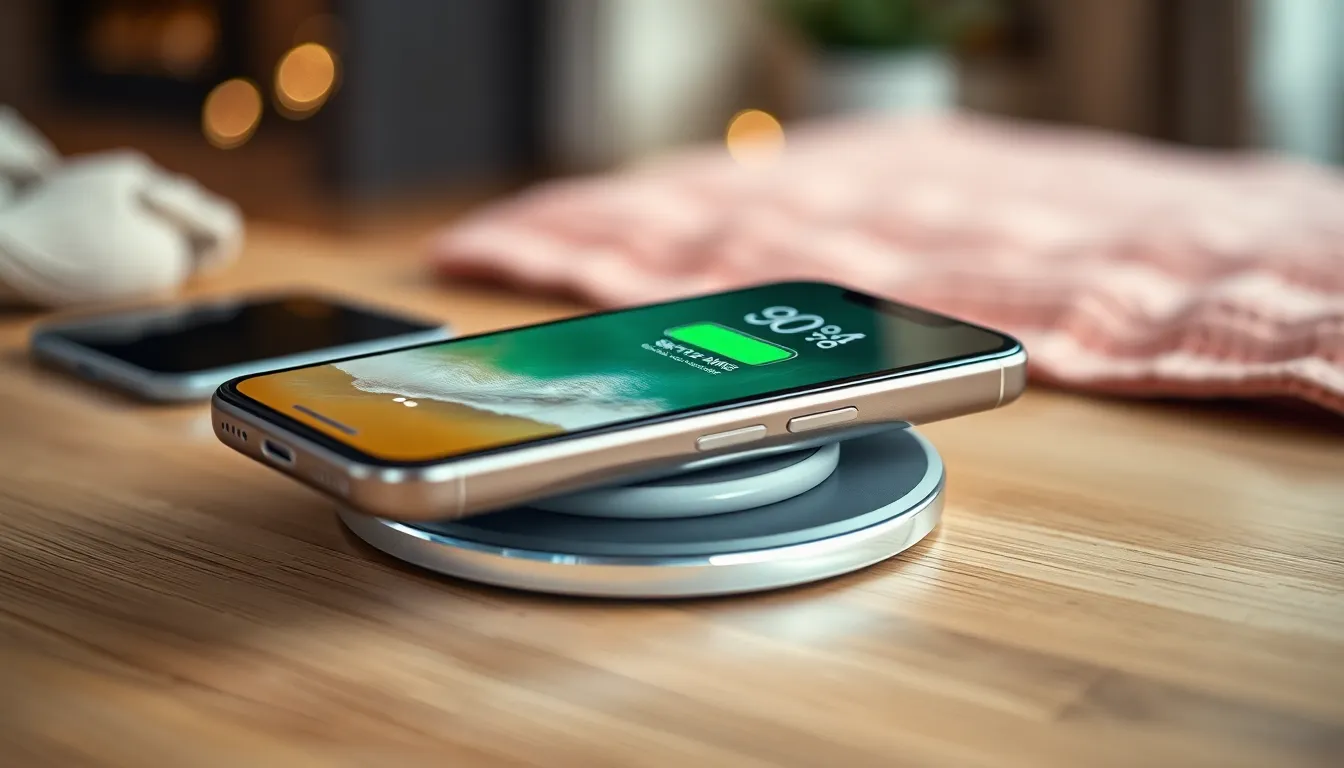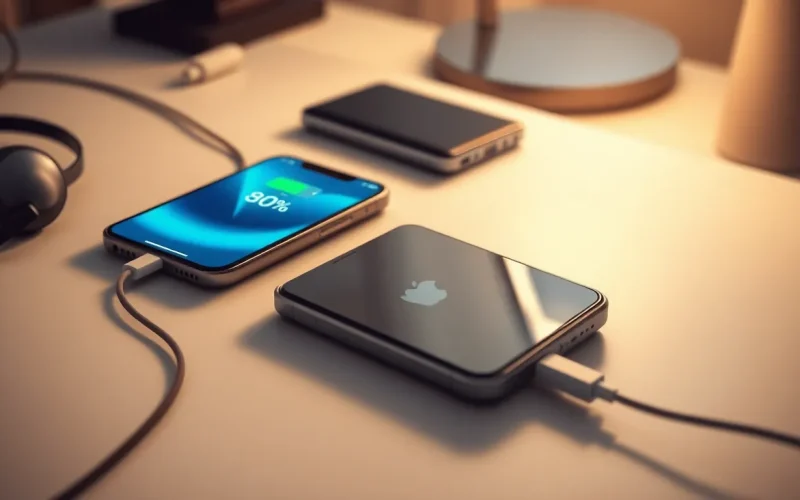Table of Contents
ToggleEver found yourself staring at your iPhone, wondering why it just stops charging at 80% like it’s on a self-imposed battery diet? You’re not alone. Many users scratch their heads, feeling betrayed by their trusty device, as it seems to have a mind of its own.
But fear not, this isn’t some rebellious act of defiance from your phone. Apple designed this feature to help prolong battery life, keeping your device healthy and happy. So while it might feel like your iPhone is playing hard to get, it’s really just looking out for you. Dive into the reasons behind this quirky charging behavior and discover how you can keep your iPhone in tip-top shape without sacrificing that precious battery life.
Understanding iPhone Charging Behavior
iPhones can stop charging at 80% to protect battery health. This feature doesn’t indicate a malfunction but rather a strategic design element from Apple.
Battery Health Management
Battery health management plays a crucial role in extending the life of an iPhone battery. Apple incorporates this feature to minimize wear on the battery over time. When charging stops at 80%, it prevents the battery from entering a cycle that could lead to quicker degradation. Users benefit from improved longevity, maintaining their device’s performance for longer periods. Regularly reaching full charge, especially repeatedly, can negatively impact overall battery lifespan.
Adaptive Charging Features
Adaptive charging features enhance user experience while preventing battery strain. Designed to learn individual charging habits, these features optimize when to pause charging at 80%. For instance, if an iPhone owner regularly charges overnight, the device holds at 80% until shortly before the user typically wakes up. This process ensures that the battery maintains optimal charge levels without risking damage from overcharging or excessive heat. Users experience fewer instances of battery decline when using adaptive charging.
Reasons for Stopping at 80%

Devices pause charging at 80% for various reasons. Understanding these factors helps clarify this behavior.
Temperature Control
iPhones monitor temperature during charging. Excessive heat can damage battery components. To prevent overheating, the phone may halt charging at 80%. Operating in extreme temperatures often triggers this feature. Notably, charging within the recommended range of 32°F to 95°F (0°C to 35°C) enhances battery performance. This safety measure protects not only the battery but also the device’s overall functionality.
Battery Longevity
Battery longevity shapes charging algorithms. Apple’s design aims to extend battery lifespan by reducing full charge cycles. Frequent charging to 100% can accelerate wear. By stopping at 80%, the device reduces stress on the battery, promoting better health over time. Therefore, maintaining optimal charge levels contributes significantly to the overall life of the battery, ensuring consistent performance throughout the device’s usage.
Common Myths About Charging
Many misconceptions surround iPhone charging habits. Understanding these myths helps in maximizing battery performance.
Overcharging Concerns
Users often worry that continuous charging leads to overcharging. Apple devices, however, come with built-in smart charging features that prevent this issue. Charging stops automatically when the battery reaches 100%. While plugged in, the device manages charge levels to maintain battery health. This prevents overheating and prolongs lifespan. Leaving the phone connected overnight won’t damage the battery, thanks to these advanced technologies.
Battery Memory Effect
Another myth involves battery memory effect. Older nickel-based batteries experienced this issue, where they’d “remember” partial charges. Lithium-ion batteries, used in iPhones, don’t have this problem. Users can charge them at any time without worrying about negative effects on capacity. Partial charging won’t degrade overall performance. Frequent shallow discharges are fine, as the battery management system optimally maintains health. Thus, charging habits shouldn’t create concern about memory effects, allowing users flexibility and peace of mind.
Troubleshooting Charging Issues
Charging problems often arise due to various factors. Users can follow some troubleshooting steps to identify the root cause.
Resetting Settings
Resetting settings might resolve charging issues. Go to the iPhone’s settings menu and select General. Scroll down to the Transfer or Reset iPhone option. Choose Reset and then select Reset All Settings. This action doesn’t erase data but restores network settings, keyboard dictionary, and location settings. After the reset, check if the charging behavior improves.
Checking Cables and Ports
Inspecting cables and ports is crucial for charging concerns. A damaged charging cable can prevent the iPhone from receiving power. Examine the cable for frays or kinks and ensure it’s an Apple-certified product. Dust or debris in the charging port can also disrupt the connection. Use a soft brush or compressed air to gently clean the port. Ensure the charging adapter is working by testing it with another device. These checks can help identify issues affecting charging efficiency.
Understanding why an iPhone stops charging at 80% can alleviate frustration for users. This feature is a thoughtful design by Apple aimed at prolonging battery life and enhancing overall device performance. By managing charging habits and embracing smart technology, users can ensure their iPhones remain in optimal condition.
Taking simple steps like checking charging cables and maintaining a clean charging port can further improve charging efficiency. Embracing these practices not only enhances user experience but also promotes long-term battery health. With the right knowledge, users can confidently navigate their iPhone charging habits and enjoy their devices to the fullest.





